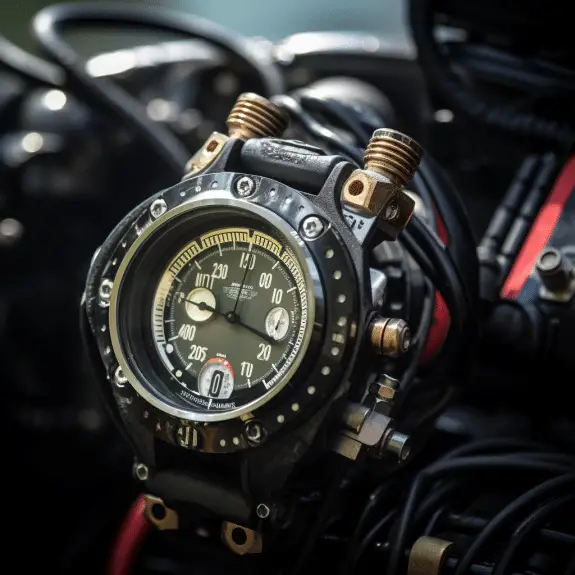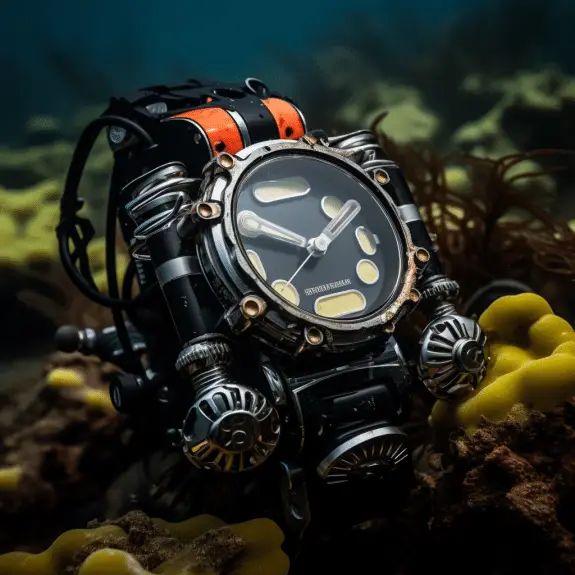Dive regulators are a must for underwater diving safety and efficiency. To make the best choice, divers need to understand the differences between types of regulators.
Balanced and unbalanced regulators are key distinctions. Balanced ones give consistent airflow no matter the tank pressure, but unbalanced ones may not perform as well when pressure drops.
The first stage is another factor. Piston-style is tough and good for cold dives, but needs frequent maintenance. Diaphragm-style is lighter and easier to care for, so more popular among recreational divers.
The second stage also varies. Venturi-assisted styles direct airflow to control breathing resistance and help stop free-flowing, saving air.
Divers should take their environment, use frequency, budget and preferences into account when selecting a regulator. Professional divers or dive shops can give useful advice.
By taking all these things into account, divers can pick the perfect regulator for their needs and have a safe and fun dive!

Explanation of dive regulators
Regulators for diving are fundamental for safety and comfort underwater. They reduce the pressure of air from the scuba tank to a breathable level. There are different types, with varying features and advantages.
The balanced piston design has a piston mechanism that supplies air to the diver constantly, no matter the depth or how much air is left in the tank. It works well even in cold water due to a sealed inside system.
The unbalanced diaphragm design uses a flexible diaphragm to supply air. It’s cheaper and requires less maintenance, but may not deliver air as constantly as the balanced piston.
The balanced diaphragm design also uses a flexible diaphragm, but with extra mechanisms for better performance and an even breathing experience.
When selecting the right regulator, think of factors like diving conditions, your preferences and budget. If you dive in cold water or go deeper, choose a balanced piston regulator. If you’re short on money or dive in warm water, an unbalanced diaphragm regulator is enough.
Understanding the differences between regulators lets you pick the one that fits your needs. Consult professionals or experienced divers if you need help. That way, you can ensure a safe and enjoyable dive every time.
Types of dive regulators
Regs can be broken into three types: balanced diaphragm, unbalanced piston, and balanced piston. Each has its own pros and cons for different diving conditions.
The table below gives an overview of these types based on key parameters such as breathing ease, performance at depth, maintenance, and cost:
| Ease of Breathing | Performance at Depth | Maintenance Requirements | Cost | |
|---|---|---|---|---|
| Balanced Diaphragm | Excellent | Excellent | Moderate | High |
| Unbalanced Piston | Good | Good | Low | Medium |
| Balanced Piston | Very Good | Very Good | High | High |
Balanced diaphragm regs offer great breathing comfort and excellent performance in various depths. Although they require moderate maintenance, they come with a high price tag.
Unbalanced piston regs provide good air supply and are great for recreational diving. Low maintenance and medium cost makes them attractive.
Balanced piston regs have very good breathing performance throughout the dive but need high maintenance. They are expensive due to their sophisticated design.
Pro Tip: Take into account your diving needs, experience level, and budget when buying a reg. Talk to professionals or experienced divers who can advise you on the best choice for your underwater adventures.
Hopefully, this overview of dive regs has helped you make a safe and enjoyable choice. Have fun exploring!
Differences between single hose regulators and twin hose regulators
Single hose regulators and twin hose regulators differ in several ways. Here’s a comparison:
Single Hose Regulators- Compact design, one hose for both inhalation and exhalation. Slightly easier to breathe underwater. Lightweight, making them great for travel.
Twin Hose Regulators- Bulky design, two hoses – one for inhalation and one for exhalation, with separate pathways. May require more effort to inhale/exhale.
Single hose regulators are compact, light, and easy to travel with. Twin hose regulators are bulkier, but offer separate air paths for inhalation and exhalation, potentially improving performance.
Consider your diving needs and preferences when choosing a regulator.
Differences between single hose regulators and balanced regulators
Single hose and balanced regulators vary in design and purpose. Here’s a table that compares these two types of dive regulators:
| Category | Single Hose Regulators | Balanced Regulators |
|---|---|---|
| Design | Uses one hose for inhalation and exhalation | Uses separate hoses for each process |
| Pressure Balance | Unbalanced system without pressure compensation | Equipped with pressure compensation |
| Breathing Effort | Might require more effort due to potential resistance | Gives easier breathing due to reduced resistance and adjustable airflow |
| Environmental | Prone to free flow in colder water | Less prone to free flow, suitable for different water temperatures |
Additionally, balanced regulators usually cost more than single hose regulators. However, their better performance and reliability make them preferred by experienced divers.
Interestingly, single hose regulators were the first models made. Balanced regulators were later developed and addressed some of the single hose regulators’ issues. Nowadays, balanced regulators are the industry standard due to their superior performance and comfort.
Differences between twin hose regulators and balanced regulators
Twin hose and balanced regulators differ significantly in design and performance. To explore these variations, let’s look at the table below.
| Regulator Type | Hose(s) | Design | Breathing Resistance | Ambient Pressure Compensation | Airflow |
|---|---|---|---|---|---|
| Twin Hose | Two hoses | Classic design | High | No | Limited |
| Balanced | One hose | Modern design | Low | Yes | Consistent |
Twin hose regulators usually require more effort from divers to inhale due to the high resistance. On the other hand, balanced regulators provide effortless and consistent airflow. Furthermore, twin hose regulators do not adjust for changes in depth or pressure, while balanced regulators do.
A tip: When deciding between the two, consider your diving needs and preferences. Balanced regulators are popular among divers looking for optimal breathing comfort underwater due to their enhanced performance and ease of use.

Conclusion
Dive regulators come in different types with special features. Each one has advantages and things to consider. Choose the right one based on your diving needs.
Piston regulators are reliable and durable. They are perfect for deep dives or extreme conditions. They offer great breathability and won’t freeze in cold water.
Diaphragm regulators are light and small, for travel and recreational diving. They work well in moderate depths.
Balanced regulators give a consistent flow of air no matter the pressure or depth. They make breathing effortless at any depth, so they are great for professional divers.
Unbalanced regulators are cheaper, but don’t offer as much breathability. They are best for shallow depths.
Look at how many stages the regulator has. Single stage regulators give a constant flow of air, but require more effort to inhale. Two-stage regulators let you adjust the airflow for better control and easier breathing.
Think about your environment. Sealed regulators keep contaminants out of the system. They are good for cold water or polluted environments. Open water regulators are cheaper and easier to take care of, but let water in.
Remember: servicing your dive regulator is important to make sure it works well and safely. Always follow the manufacturer guidelines and get it checked by a professional.
Choose the right dive regulator for your diving style and preferences. It will make your underwater experience better and safer.
Frequently Asked Questions
FAQs: What are the differences between various types of dive regulators?
Q: What is a dive regulator?
A dive regulator is a crucial piece of scuba diving equipment that controls the air pressure delivered from the scuba tank to make it breathable for the diver.
Q: What are the main types of dive regulators?
The main types of dive regulators are:
– Piston Regulator
– Diaphragm Regulator
– Balanced Diaphragm Regulator
– Over-Balanced Diaphragm Regulator
– Venturi-Assisted Regulator
– Integrated Octopus Regulator
Q: What is the difference between a piston and a diaphragm regulator?
A piston regulator uses a piston to control the air flow, while a diaphragm regulator uses a flexible diaphragm. The diaphragm regulator is generally more durable and resistant to freezing compared to the piston regulator.
Q: What makes a balanced diaphragm regulator different?
A balanced diaphragm regulator has an extra chamber that maintains ambient pressure around the diaphragm, resulting in consistent performance at any depth. This design provides increased breathing sensitivity and reduces the risk of free-flow.
Q: How does an over-balanced diaphragm regulator work?
An over-balanced diaphragm regulator provides even better breathing performance at depth. It uses additional mechanisms to increase the intermediate pressure as the diver descends, compensating for the increased water pressure.
Q: What is a venturi-assisted regulator?
A venturi-assisted regulator incorporates a venturi effect control to enhance breathing comfort. The venturi switch can be adjusted to either provide an easier inhalation or to prevent free-flow during storage or when not in use.
